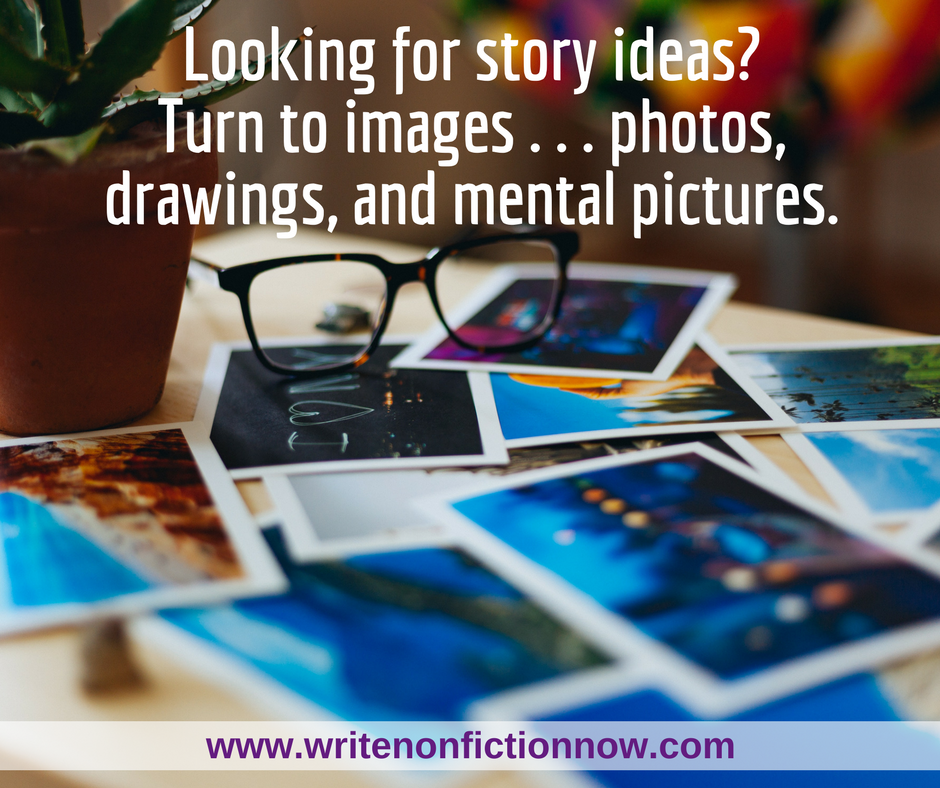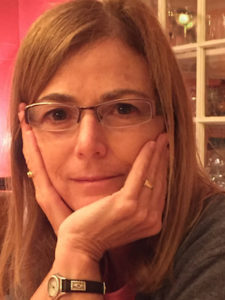Wednesday, May 9, 2018

If you are looking for new story ideas or need to get unstuck, don’t just tough it out. Instead, try some unique creativity hacks that require you to focus on what you see rather than on what you write. Today, professional writer Deb Hemley (
@dhemley) offers three ways to call up images and memories that will spark ideas for your next or current nonfiction writing project.
Some years back, I attended my first writing workshop. The instructor started the class by placing a bunch of photos on the table and asked each person in the group to choose an image to which we could relate. After everyone selected a photo, she asked us to pick-up our pens and begin to write about the image.
My photo was of a red bicycle. After staring at the blank page for a few minutes, a flood of memories suddenly came to me about a specific day in my childhood when I went with my dad to a bicycle store. Next thing I knew I was writing about standing in the dusty old shop, feeling utterly infatuated with a cherry-red Schwinn bike.
I also remembered my discomfort around the shop owner, who looked freakishly like Alfred Hitchcock. When he talked, he sounded like he had a mouthful of marbles. When the owner pointed to the bike’s shiny metal bell, I could see that he had fingertips coated with layers of black bike grease.
I found myself filled with sadness for the odd-looking man with stained fingers, and that started to make the bike look less and less inviting.
I hadn’t thought about the red Schwinn or the shop owner in at least thirty-odd years. The story I summoned that day was only a short page, but the writing experience was deeply gratifying.
Images are alive in the way our memory is alive. Click To Tweet
What Happened?
What happened to me and all the other group participants that day? Author Lynda Barry has exquisitely written and drawn about the experience for years in her books,
What It Is and
Syllabus, and taught college students in her class, Writing the Unthinkable.
Barry, who has been referred to as a creativity guru, differs from other writing instructors. She doesn’t address the usual topics one might expect, e.g., arc of the story, dialogue, writing style. Instead, Barry starts with a fundamental question, “What is an Image?”
In reference to the story I shared above, Barry’s not asking what image I selected from the pile of photographs on the table. She describes images as the “formless thing, which gives things form.” She explains that at the center of everything we call the “arts” and children call “play” is something that seems somehow alive.
Images are alive in the way our memory is alive. Alive in being able to transport us and contain us. Alive in the way thinking is not, but experiencing is made of both memory and imagination. This, she says, is the thing we mean by image.
What Makes an Image An Image?
As Barry prepares readers for hands-on exercises in
What It Is, she elaborates further about where images are found, when images come to us, where they come from, and why they exist. And in one lovely explanation, she says, “I believe they are the soul’s immune system and transit system.”
Barry claims an image feels different from a thought. “It feels somehow alive.”
Test How Something Can Feel Alive
Here’s an exercise Barry suggests that you can try right now: speak your first phone number out loud. How did it feel? Does it feel different than saying your current phone number? What images arise as you say the numbers?
Saying my first phone number brought back tons of memories of a black rotary dial telephone with a faded white placard that read, 295-4051. Throughout
What It Is, Barry has readers consider many other questions about images, experiences, memories, imagination, and more.
The mental images sparked by speaking your old phone number—or the address of the home in which you grew up, the name of your first love, or the pet you had in high school—can turn into new story ideas.
Images can become fodder for memoir, creative nonfiction, and nonfiction narrative stories.Click To Tweet
Use a Daily Diary
Here’s something you can utilize in your life now: a daily diary—a meaningful practice for capturing sights, sounds, as part of your notes and observations.
Barry suggests making a frame on a page in a composition book (yes, those black and white books we all had in elementary school). Then divide the page into quarters. Mark the first quarter
Did; the second,
Saw; the third,
Heard; and the fourth,
Drawn.
Every day spend 2 ½ minutes on what you did, 2 ½ minutes on what you saw, 30 seconds on something you heard someone say, recording as many things as you can recall. Then spend 30 seconds drawing a picture of what you saw. The more you try to note and track observations the more you’ll gain from the daily exercise.
For example, I will create more indelible images if I write about my day:
Did: Saturday, I went to an exhibit at the Museum of Fine Arts.
Saw: I saw an exhibit of Escher’s drawings.
Heard: I overheard a woman point out to her friend, “All the shapes repeat themselves without leaving any gaps. Remarkable, isn’t it?”
Drew: I created
a quick sketch of the museum (that didn’t look like the museum at all.)
Versus, if I had merely written in my journal: Saturday, I went to an exhibit at the Museum of Fine Arts.
I can’t say for sure if it makes a difference whether you do this at the end of each day or the following day, but I think whatever works best for you and you’ll be more apt to keep it up—go with what works.
Capture Images that Spark New Story Ideas
As a child, everything feels new, surprising, alluring and at times utterly scary. I believe those childhood images more easily make indelible impressions. As adults, things pass by so quickly that we might miss them entirely unless we stop to notice.
Barry’s diary exercise can help you etch your observations into the fiber of your being. These images then can become fodder for memoir, creative nonfiction, and nonfiction narrative story ideas. They are the things we are literally and figuratively are drawn to, that stand out for us, make our perspectives unique, and help guide us to the heart of our stories.
After maintaining a daily practice of diary entries for a period, you can flip through the pages and notice patterns. And when you’re ready, you may choose to begin to write your next piece.
Can you access stories in images? Did saying your first phone number out loud generate memories that could become a story? Would a daily diary help you capture potential stories?
Let me know what you think in a comment below.
About the Author
 Deb Hemley
Deb Hemley writes memoir, personal essay, short fiction, and articles about social media. She has published pieces in
Biographile, Hippocampus Magazine, All That Matters, and
Survivor’s Review. You can follow her on Twitter
@dhemley.
Photo courtesy of Dan Gold on UnsplashThe post
How to Find Story Ideas in Images, Phone Numbers, and Journal Entries appeared first on
Write Nonfiction NOW!.
Nina Amir, the bestselling author of How to Blog a Book and The Author Training Manual, is a speaker, a blogger, and an author, book, blog-to-book, and high-performance coach. Known as the Inspiration to Creation Coach, she helps creative people combine their passion and purpose so they move from idea to inspired action and positively and meaningfully impact the world as writers, bloggers, authorpreneurs, and blogpreneurs. Some of Nina’s clients have sold 300,000+ copies of their books, landed deals with major publishing houses and created thriving businesses around their books. She is the founder of National Nonfiction Writing Month, National Book Blogging Month, and the Nonfiction Writers’ University. As a hybrid author she has published 19 books and had as many as four books on the Amazon Top 100 list at the same time. Her most recent book is called Creative Visualization for Writers, and tomorrow her 19th book will be released, The Write Nonfiction NOW! Guide to Creativity and Flow. Find all her books at booksbyninaamir.com or find out more about her at ninaamir.com.